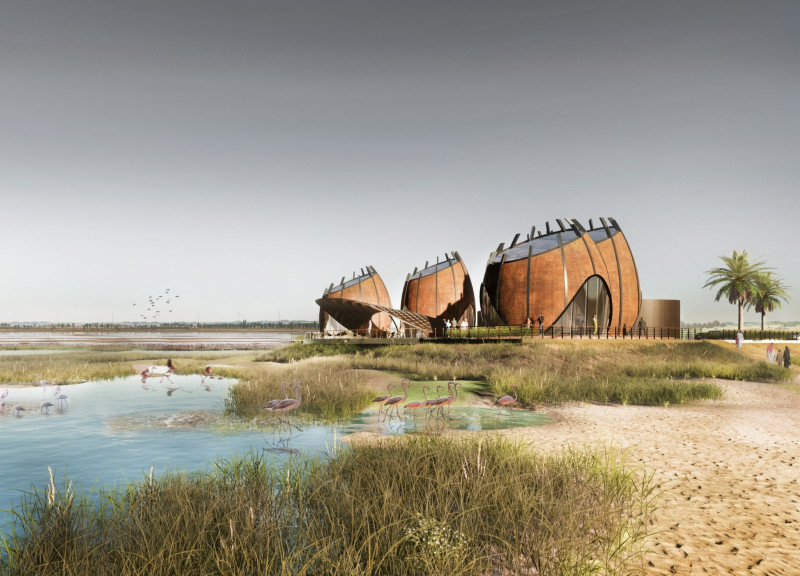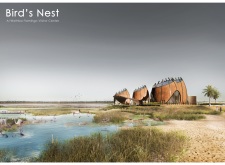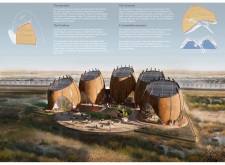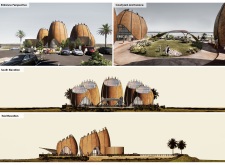5 key facts about this project
The architecture draws inspiration from the natural habitat of the flamingo, adopting organic, egg-shaped forms that blend with the surrounding environment. This approach not only enhances the aesthetic appeal of the visitor center but also establishes a visual connection to the wetlands, encouraging visitors to appreciate the unique ecosystems in the area.
Sustainable Construction Techniques
One unique aspect of the Bird’s Nest project is its focus on sustainability through the use of eco-friendly materials and construction techniques. Key materials include a timber frame for structural integrity, aluminum cladding for durability, and insulated panels to enhance thermal efficiency. The incorporation of solar panels on the roofs promotes energy independence and minimizes the ecological footprint of the building. Additionally, a natural ventilation system facilitates airflow without relying heavily on mechanical cooling, further contributing to energy efficiency.
The project also emphasizes water conservation, utilizing a rainwater harvesting system to collect and repurpose rainwater for irrigation, reducing the demand on local water resources. This integration of sustainable design solutions reflects a growing trend in architecture to prioritize environmental stewardship in public buildings.
Visitor Experience and Engagement
The layout of the visitor center is designed to enhance the visitor experience by creating fluid, inviting spaces that encourage interaction with both the architecture and the surrounding wetlands. The central courtyard serves as an engaging focal point, offering panoramic views of the landscape and serving as a venue for community events and educational programs. The arrangement of pavilions promotes easy navigation while ensuring that visitors maintain visual and physical connections to the wetlands.
Each pavilion caters to different aspects of visitor engagement, featuring exhibition spaces that provide insights into local biodiversity and conservation efforts. The design encourages educational opportunities through interactive installations and curated exhibits, fostering a deeper understanding of the importance of preserving natural habitats.
The Al Wathba Flamingo Visitor Center stands out in its thoughtful approach to blending architecture with nature. By prioritizing sustainability, community engagement, and an immersive visitor experience, the project exemplifies contemporary architectural principles that address environmental concerns while also enhancing public understanding of crucial ecological issues.
To gain deeper insights into this project, explore the architectural plans, architectural sections, architectural designs, and architectural ideas that illustrate the complexity and intention behind the Bird's Nest Visitor Center.


























